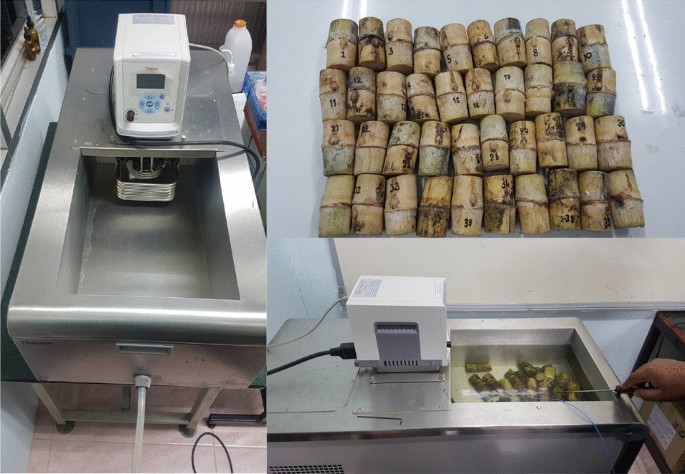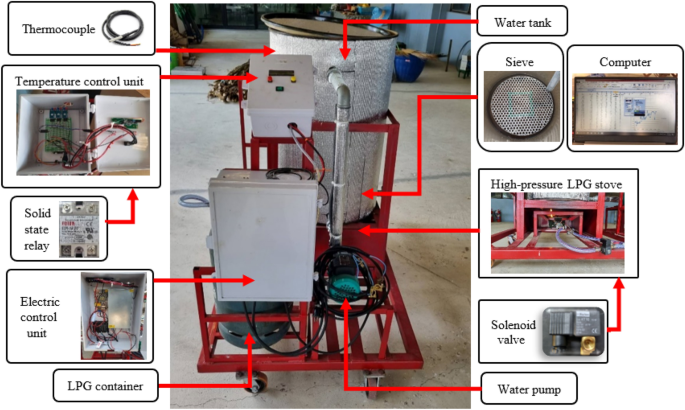What Governments Are Doing to Promote Products From Sugarcane
What Governments Are Doing to Promote Products From Sugarcane
Blog Article
Discover the Innovative Advantages of Products From Sugarcane for Sustainable Living
Sugarcane has emerged as a critical resource in the pursuit for lasting living. Its diverse applications span eco-friendly product packaging, renewable resource, and much healthier food choices. As sectors look for environmentally friendly choices, sugarcane's convenience supplies encouraging solutions. Nevertheless, truth capacity of sugarcane extends past its existing uses. Discovering its ingenious benefits might expose brand-new pathways toward an extra sustainable future. What other possibilities might this amazing plant hold?

The Surge of Sugarcane as a Lasting Resource
As international awareness of ecological concerns grows, sugarcane has actually emerged as a noticeable lasting source. This functional plant supplies a range of advantages that add to eco-friendly methods. Sugarcane is a renewable energy, with the ability of thriving in varied environments while absorbing carbon dioxide, thus minimizing greenhouse gas emissions. Its fast development cycle permits regular harvesting, causing a continual supply of raw material.Additionally, sugarcane cultivation frequently calls for much less water contrasted to various other plants, making it an efficient alternative in water-scarce areas. The by-products of sugarcane, such as bagasse and molasses, can be repurposed for various applications, minimizing waste and advertising round economic situation concepts. Improvements in farming practices have led to more sustainable farming techniques, further enhancing sugarcane's environmental profile. As consumers significantly look for sustainable options, sugarcane attracts attention as a viable option for those committed to reducing their eco-friendly footprint.
Biodegradable Packaging Solutions
Just how can naturally degradable packaging solutions change the method consumers come close to sustainability? By using sugarcane-based materials, these innovative solutions supply an engaging option to traditional plastics. Naturally degradable packaging made from sugarcane decays normally, substantially decreasing landfill waste and greenhouse gas emissions. As consumers come to be progressively knowledgeable about their ecological impact, the demand for lasting product packaging proceeds to rise.These sugarcane-derived items not only offer useful objectives yet likewise align with eco-conscious customer values. They supply a concrete way for people and services to add to a round economic situation, promoting resource performance and minimizing ecological impacts. Furthermore, as sectors embrace eco-friendly options, they cultivate a culture of sustainability that reverberates with an expanding demographic seeking liable choices.In essence, biodegradable packaging remedies from sugarcane represent an essential advance in lasting methods, equipping customers to make eco friendly decisions without sacrificing ease or quality.
Renewable Resource Generation From Sugarcane
A substantial section of renewable resource generation can be stemmed from sugarcane, showcasing its flexibility beyond traditional agricultural usages. Sugarcane biomass, consisting of bagasse and leaves, is a potent resource for bioenergy production. This biomass can be exchanged biofuels such as ethanol, which serves as a cleaner choice to nonrenewable fuel sources. In addition, the combustion of sugarcane by-products creates vapor and electrical energy, providing an energy resource for sugar mills and close-by communities.The farming of sugarcane additionally contributes to carbon sequestration, as the plants soak up co2 throughout their development cycle. By using sugarcane for energy, waste is minimized, and sustainable practices are encouraged. This eco-friendly power technique not just supports power needs however also advertises rural development, developing work in bioenergy fields. In general, sugarcane stands out as a crucial gamer in the shift to sustainable energy remedies, aligning with global initiatives to minimize carbon impacts.

Eco-Friendly Textiles and Fabrics
Eco-friendly textiles and textiles originated from sugarcane present an appealing choice to standard products. These eco-friendly alternatives not just minimize ecological impact yet likewise provide sturdiness and efficiency similar to standard fabrics. Lasting manufacturing processes better improve their appeal, making them an indispensable part of a sustainable lifestyle.
Eco-friendly Material Alternatives
Why is the change towards naturally degradable fabric alternatives crucial for sustainable living? The enhancing understanding of ecological destruction has triggered a look for choices to standard textiles, which frequently add to contamination and waste. Eco-friendly fabrics, stemmed from renewable energies such as sugarcane, provide an encouraging service. These products disintegrate normally, decreasing land fill accumulation and reducing ecological impact. Additionally, they can assist lower carbon impacts and dependence on nonrenewable fuel sources. As customers become a lot more eco-conscious, the need for sustainable fabrics expands, motivating suppliers to introduce and spend in naturally degradable choices. This modification not only sustains lasting techniques yet additionally cultivates a round economy, leading the way for a much more responsible strategy to fashion and fabric manufacturing.
Resilience and Performance
When reviewing environmentally friendly textiles and materials, toughness and efficiency are essential factors. Sugarcane-derived materials demonstrate outstanding strength and resilience, making them appropriate for different applications. These fabrics usually show remarkable moisture-wicking homes, which enhance comfort in everyday wear. Additionally, their all-natural fibers add to breathability, making certain that garments stay wearable and fresh also sought after problems. The efficiency of sugarcane-based fabrics encompasses their resistance to tear and wear, permitting products to keep their stability over time. These green textiles can be treated to enhance UV defense and stain resistance, satisfying the practical requirements of consumers without compromising sustainability. Inevitably, sugarcane fabrics supply a harmonious balance of longevity and performance, attracting eco conscious individuals.
Sustainable Production Processes
The impressive longevity and efficiency of sugarcane-derived fabrics are enhanced by lasting manufacturing processes that prioritize environmental responsibility. These procedures make use of renewable resources, lessening dependence on nonrenewable fuel sources and lowering carbon footprints. By utilizing the byproducts of sugarcane farming, manufacturers can develop environment-friendly fabrics while promoting waste decrease. Advanced strategies, such as water-efficient dyeing and eco-friendly therapies, better boost the sustainability of these fabrics. Furthermore, the use of safe chemicals warranties that the manufacturing process does not harm communities or human health. This dedication to sustainability not just interest ecologically conscious customers however likewise supports regional economies by advertising lasting agricultural practices. On the whole, sugarcane-derived textiles stand for a considerable step towards a greener future in the garment industry.
Sugarcane-Based Biofuels and Their Impact

Sugarcane-based biofuels have actually emerged as a considerable different energy source, offering an eco-friendly option to the globe's expanding energy needs. These biofuels, originated from the fermentation of sugarcane juice or molasses, provide an even more lasting choice contrasted to fossil gas. Their production process produces lower greenhouse gas emissions, adding to climate adjustment reduction efforts.Additionally, sugarcane biofuels can boost energy safety and security by expanding power sources and reducing reliance on imported oil. The farming of sugarcane also promotes rural advancement, developing jobs and promoting neighborhood economies.However, concerns concerning land usage and food competitors persist, as enhanced biofuel manufacturing may influence food supply chains. Sustainable farming techniques are vital to balancing these ensuring and competing rate of interests that biofuel manufacturing does not undermine food safety and security. Generally, sugarcane-based biofuels stand for an encouraging opportunity for a greener power future, gave that their ecological and social ramifications are carefully handled.
Healthier Alternatives: Sugarcane in Food Products
While lots of consumers look for much healthier options in their diets, sugarcane items supply a healthy choice navigate to this website to improved sugars and artificial sweeteners. Derived from the natural extraction of sugarcane juice, these products maintain crucial nutrients, consisting of minerals and vitamins, that are often lost in processed sugars. Sugarcane includes antioxidants and nutritional fiber, adding to overall health and wellness.Many health-conscious individuals are turning to sugarcane syrup and jaggery, which give a reduced glycemic index compared to conventional sugars, making them suitable for those handling blood glucose degrees. Additionally, sugarcane-derived sweeteners can enhance the taste of various dishes without the damaging results connected with man-made additives.This shift towards all-natural sweetening agents not just advertises far better nutritional options but also straightens with sustainable living practices, as sugarcane is a renewable source. As a result, sugarcane items are becoming favorable alternatives in the domain of food.
The Future of Sugarcane in Lasting Developments
The future of sugarcane is positioned to include ingenious applications that expand past traditional usages. Its potential as a resource for biodegradable packaging remedies and sustainable power sources highlights its function in sustainable methods. Exploring these improvements could significantly influence environmental conservation and source administration.
Biodegradable Product Packaging Solutions
A boosting variety of business are transforming to biodegradable packaging remedies originated from sugarcane as an appealing choice to traditional plastics. These ingenious materials, commonly made from sugarcane fibers and bioplastics, decompose normally, reducing the long-lasting environmental impact connected with conventional plastic waste. By using sustainable sources, sugarcane-based packaging adds to a much more lasting manufacturing cycle, lining up with international initiatives to deal with air pollution and environment adjustment. In addition, these solutions frequently preserve the durability and functionality required for various applications, from food containers to shipping products. As customer need for green alternatives expands, companies embracing sugarcane product packaging not only enhance their brand picture however also play an essential duty in fostering a circular economic situation, leading the way for a greener future.
Renewable Resource Resources
Biodegradable product packaging great post to read services are simply one aspect of the wider capacity of sugarcane in promoting sustainability. Another substantial application depends on sustainable power resources. Sugarcane is a versatile plant that can be utilized to create biofuels, such as ethanol, which functions as a cleaner option to nonrenewable fuel sources. The fermentation process of sugarcane juice returns ethanol that can power automobiles and produce electrical energy. In addition, the by-products of sugarcane processing, like bagasse, can be utilized to produce biomass power, using a reliable and sustainable approach to harness energy. This dual role as both a resource of biofuel and biomass underscores sugarcane's possibility in minimizing carbon exhausts and sustaining a shift to an extra sustainable power landscape in the future.
Frequently Asked Inquiries
Just How Is Sugarcane Harvested Sustainably?
Sugarcane harvesting can be lasting with strategies like hands-on cutting, which reduces soil interruption, and making use of machinery that reduces fuel intake (Products From Sugarcane). Crop rotation and integrated parasite management further improve ecological health and wellness and advertise lasting dirt fertility
What Are the Environmental Impacts of Sugarcane Farming?

Can Sugarcane Products Be Recycled?
The question of whether sugarcane items can be reused discloses a positive expectation. Many sugarcane-derived materials, such as bioplastics and product packaging, are designed for recyclability, adding to a much more sustainable waste monitoring approach within ecological factors to consider.
Are There Any Type Of Disadvantages to Utilizing Sugarcane-Based Products?
The disadvantages of using sugarcane-based products include potential land use competition with food plants, obstacles in massive manufacturing, and issues concerning the ecological effect of monoculture farming practices, which can diminish biodiversity and soil health and wellness.
How Does Sugarcane Growing Affect Resident Communities?
Sugarcane growing impacts regional areas by providing job opportunity and boosting local economies. It can likewise lead to land disputes and environmental issues, impacting agricultural techniques and community wellness, requiring a well balanced strategy to growth. Developments in agricultural methods have led to even check over here more lasting farming techniques, better improving sugarcane's environmental account. Additionally, the combustion of sugarcane results produces vapor and electrical power, giving an energy source for sugar mills and close-by communities.The farming of sugarcane also contributes to carbon sequestration, as the plants soak up carbon dioxide throughout their growth cycle. By using sugarcane for power, waste is reduced, and lasting techniques are encouraged - Products From Sugarcane. Sugarcane consists of anti-oxidants and dietary fiber, contributing to general wellness and wellness.Many health-conscious people are transforming to sugarcane syrup and jaggery, which provide a lower glycemic index compared to standard sugars, making them ideal for those managing blood sugar levels. Furthermore, the results of sugarcane handling, like bagasse, can be used to create biomass energy, supplying a reliable and lasting technique to harness power
Report this page